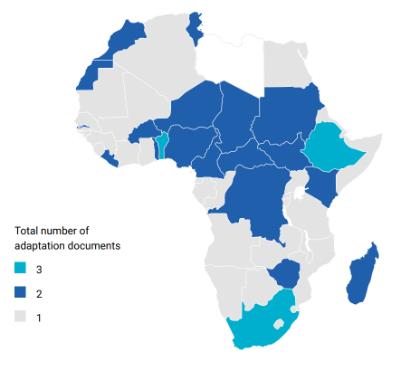Scalable Pathways for Coastal Restoration: Lessons from RestCoast and Beyond
A
round the world, coastal communities are increasingly on the frontline of climate change. Storms, flooding, salinity intrusion, and erosion are growing threats to lives, livelihoods, and infrastructure, particularly across the Global South, where climate impacts often collide with under-resourced planning systems and underinvestment. Yet alongside this risk lies an emerging opportunity: to scale coastal restoration not just as an environmental intervention, but as a socially inclusive, financially viable strategy for climate adaptation. Nature-based coastal restoration such as mangrove reforestation, wetland preservation, and hybrid infrastructure that combines green and grey solutions, has proven potential to reduce flood risk, protect biodiversity, and deliver co-benefits for livelihoods and food systems. In many places, the foundations for scaling already exist. What’s needed now is to move from promising pilots to place-based, system-wide strategies.
At the Global Center on Adaptation (GCA), we’ve been closely involved in shaping thinking on how restoration can be outscaled globally including as a contributor to the EU-funded RestCoast project. While RestCoast primarily focuses on European coastal systems, GCA’s engagement brought a complementary lens: how restoration approaches can be adapted for low-resource, high-risk settings in Africa and Asia. From Dakar to Dar es Salaam, coastal African cities are grappling with intensifying hazards. GCA’s analysis of EM-DAT disaster data shows that between 2000 and 2025, over 70 million people in African coastal countries were affected by climate-induced storms, floods, and landslides. In Bangladesh, over 140 million people experienced similar hazards, compounded by rising sea levels, saline intrusion, and degraded ecosystems. These figures underscore the scale of the challenge but also the urgency and opportunity to act.
REST-COAST is a EU-funded project working to scale up coastal restoration as a solution for climate adaptation and biodiversity recovery. Running from 2021 to 2026, it supports nine pilot sites across Europe, each applying a common but locally adapted approach and sharing lessons to strengthen restoration outcomes at scale.
Structured across eight work packages, REST-COAST combines hands-on ecosystem restoration, climate risk modelling, sustainable finance, and inclusive governance. It is generating practical tools, investment frameworks, policy briefs, and digital engagement materials to mainstream nature-based solutions into coastal planning. As it nears completion, the project offers a strong evidence base and momentum for transforming coastal resilience.
Coastal Restoration in Africa: A Gap Between Vision and Delivery
GCA assessed national adaptation strategies across African coastal countries using its Investment Readiness Framework. Encouragingly, many governments are already prioritising coastal systems in their Nationally Determined Contributions (NDCs) and National Adaptation Plans (NAPs), a strong signal of growing political will. Yet the level of planning and readiness varies:

- 12 out of 27 countries that prioritise coastal systems have set concrete goals;
- 5 have time-bound actions with associated costs;
- 3 have specified institutional responsibility for implementation.
While challenges around finance and coordination remain, particularly the dominance of debt-based adaptation funding and fragmented governance, there is clear progress. Countries such as Cabo Verde, Seychelles, Tunisia, and Namibia are starting to translate coastal priorities into budgets, policies, and measurable targets. GCA can help sustain this momentum by contributing knowledge, tools, and policy insights to inform climate-resilient planning in coastal regions.
Bangladesh: A Blueprint for Localising and Scaling Resilience
Bangladesh’s southern coast faces some of the world’s highest climate risks, yet the country has emerged as a global leader in adaptation planning. Its Delta Plan 2100 and National Adaptation Plan (2023–2050) lay out long-term resilience strategies grounded in data and multi-level governance. Working with the Institute of Water and Flood Management (IWFM) and municipal governments, GCA supported a programme to embed Nature-Based Solutions into urban planning across 22 coastal towns (Pourashavas), in the Coastal Towns Climate Resilience Project. These towns face rising hazards but limited institutional and technical capacity.
The approach was systematic and place-based:
- High-resolution diagnostics identified flooding, erosion, and water scarcity in each pilot town.
- Locally tailored interventions were co-designed, from rainwater harvesting in Kuakata to bioengineered riverbanks in Morrelganj.
- Institutional alignment ensured these solutions were embedded into municipal masterplans, working closely with the Local Government Engineering Department (LGED) and utilizing the ACT framework.
- Financial viability was built in, with cost-benefit analyses showing returns of over 14% for canal restoration helping make the case for scale-up.
The program advanced locally led adaptation (LLA). In towns like Patuakhali and Bagerhat, informal settlements mapped their own vulnerabilities and designed context-specific solutions with local authorities, from elevated roads to freshwater catchments and livelihood diversification. This experience shows that scaling doesn’t mean copying. It means clustering places with similar challenges, adapting proven approaches, and building institutions and financing pathways that connect communities to long-term resilience goals.
What the Global South Needs to Scale Coastal Restoration
Africa and Asia are not blank slates waiting for solutions; they are full of promising pathways. But to realize these, three conditions must be met:
- Finance must be accessible, appropriate, and not debt heavy. Innovative, blended, and grant-based models, backed by credible costing, are essential.
- Governance must connect national plans to local action. Institutional clarity and capacity are needed to ensure that coastal restoration doesn’t remain on paper.
- Communities must be co-creators, not just beneficiaries. Local knowledge, ownership, and feedback loops are essential for sustainability.
As climate threats intensify, coastal restoration offers more than protection; it opens a path to inclusive, climate-resilient development. The groundwork is already visible in the commitments of African governments, the innovation of Bangladeshi towns, and the voices of local communities shaping their own futures. But unlocking the full potential of restoration requires systemic shifts: in how finance flows, how institutions collaborate, and how communities lead. Through collaborations like RestCoast, we’ve been able to explore how models designed for one region can be adapted to work in others, bridging technical expertise with on-the-ground realities. At GCA, we see this not as a distant ambition but as a practical agenda: one where restoration is rooted in local contexts, scaled through partnerships, and sustained by long-term vision.

Emma Maythew is Junior Officer from Research for Impact (R4I) at GCA

Daniel Flores is Senior Officer from Research for Impact (R4I) at GCA

Annabel Nyole is Junior Officer from Research for Impact (R4I) at GCA
The ideas presented in this article aim to inspire adaptation action – they are the views of the author and do not necessarily reflect those of the Global Center on Adaptation.